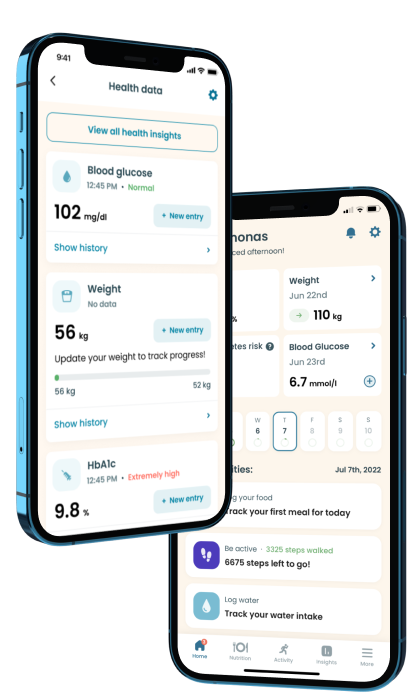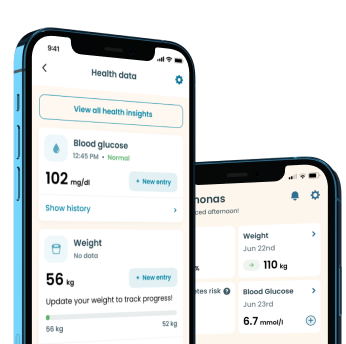Tuna and Diabetes

Good
0
121 kcal
While there is no special diabetic diet, the foods you consume can contribute to managing your condition, how well you feel, and your energy levels. The American Diabetic Association (ADA) recommends that people with diabetes consume fish high in omega-3 fatty acids such as tuna.
Studies on tuna and diabetes have shown the fish to aid diabetes management by reducing inflammation and improving blood sugar control. This article provides more insight into the benefits of eating tuna fish for people with diabetes.
Nutritional value
- Protein 29 g
- Carbohydrate 0 g
- Fat 0.6 g
- Fiber 0 g
- Sugar 0 g
- Cholesterol 47 g
Tuna Nutritional Facts
Tuna is a high-protein, low-carbohydrate food, and like other fatty fish, it provides healthy omega-3 fatty acids. This makes it an excellent choice for anyone looking to reduce carb intake and maintain blood sugar management.\
Tuna is also a good provider of various other nutrients, including vitamin A, phosphorus, and selenium.
Take a quiz
Discover what Klinio app can do for you
Healthy diabetes meal plan crafted just for YOU

Personalized workouts with no equipment needed

Track your progress with smart tracking tools

The Benefits of Eating Tuna for Diabetes
The health benefits of eating tuna as a diabetic patient are numerous. We’ve highlighted the most common ones in the following sections.
Low Carbohydrate
When you eat tuna, you don't have to worry about rising blood sugar because it contains very few carbohydrates. A 3.5-oz serving of tuna steaks offers just 0.3 g of carbs, while a comparable serving of canned tuna has less than 0.1 g carb content.
Rich in Omega-3 Fatty Acids
Omega-3 fatty acids are polyunsaturated fat found primarily in fish oils, with proven heart benefits. Due to the elevated risk of heart disease in people with diabetes, including these healthy fats in your diet is beneficial. Namely, they possess anti-inflammatory characteristics that help to prevent fat deposits from forming or growing in your arteries — a common cause of heart attack or heart failure. Hence, people with diabetes are recommended to consume fish high in omega-3 fatty acids at least twice a week by the American Heart Association.
Low in Saturated Fat and Cholesterol
People that have diabetes are prone to having high blood cholesterol levels. However, the low cholesterol and saturated fat content of tuna make it a heart-healthy option. A 1-oz serving of canned tuna offers just 10.2 mg of cholesterol.
High Protein Content
Weight control is an essential part of diabetes therapy, particularly if you have type 2 diabetes. Tuna and other lean protein sources supply the building blocks needed to keep your body systems running smoothly without adding excess calories to your diet. Namely, a 3-oz serving of canned tuna yields about 16 g of high-quality protein.
Rich Vitamin D Profile
Vitamin D can help your glucose metabolism in addition to supporting bone health. Tuna is one of the few foods containing vitamin D naturally — as much as 0.34 mcg in a mere 1-oz canned tuna serving. A 2019 study in the European Journal of Endocrinology asserted that supplementing with 5,000 IU of vitamin D over six months may benefit individuals with high diabetes risk or newly diagnosed type 2 diabetes patients. Enhanced peripheral insulin sensitivity and improved beta-cell function were noted, indicating a slowed metabolic deterioration in this population.
Research Highlighting How Tuna Benefits Diabetes
Tuna's omega-3 fat content is responsible for the majority of its health benefits. Omega-3 levels in the blood were shown to be lower in patients with type 2 diabetes and non-alcoholic fatty liver disease in a 2014 study. Similarly, increased omega-3 fat levels in the blood improved insulin sensitivity in a trial of over 350 individuals.
Drawing from other studies, increased omega-3 intake has also been shown to reduce fasting blood sugar (FBS) and HbA1C levels, in addition to enhancing insulin sensitivity. Researchers focused on the relationship between eating fish like tuna and diabetes also discovered that individuals who consume more omega-3 FA had a lower risk of developing diabetic retinopathy. In addition, increased consumption of fish has also been demonstrated to lower LDL and total cholesterol levels in persons with prediabetes.
Furthermore, omega-3 fatty acids may also help to lower the incidence of type 2 diabetes. According to one study, every 80 g-piece (approximately 3 oz) of fatty fish ingested each day reduced the risk of diabetes by 20%. Another study published in the Diabetes Care journal in 2014 showed that males who consumed more omega-3s daily had a lower chance of developing type 2 diabetes over the long term.
Conclusion
Tuna has proven to offer impressive blood sugar-lowering properties due to the rich combo of nutrients it packs — low carbs and saturated fat content, alongside high protein and vitamin D and omega-3 FA content. Hence, incorporating it into your diet as a diabetic would do you a lot of good.

Download Klinio app!
Get more by downloading our free Klinio App. Analyze your health, form new habits and manage your diabetes anytime, anywhere.
OR
SCAN QR CODE



GET THE APP











